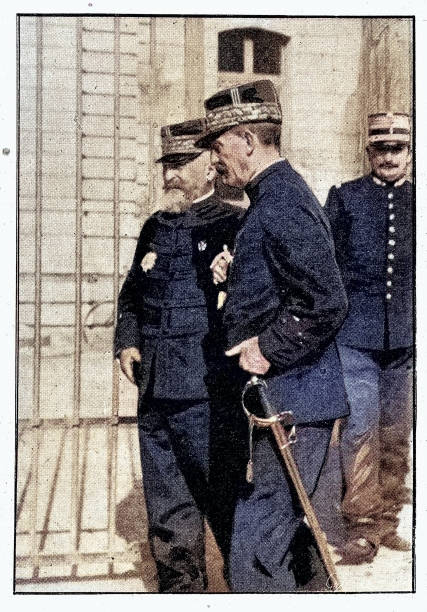
World War One French Uniforms: A Complete Guide to WWI Military Attire
Published on Feb 21, 2025
World War One French Uniforms: A Complete Guide
Introduction: The Role of Uniforms in WWI
At the onset of World War 1, the French army still wore uniforms reminiscent of the 19th century. However, battlefield realities quickly necessitated a transformation. The early war period's bright red trousers and blue tunics were soon replaced by the more practical horizon blue uniforms, designed for better camouflage and efficiency.
The Evolution of French Army Uniforms in WW1
1. The Pre-War Uniform: A Tradition of Bright Colors
Before WWI, the French military adhered to a long-standing tradition of bold-coloured uniforms, consisting of:
- Dark blue tunics: A staple of the French army dating back to the Napoleonic era.
- Red trousers: A highly visible but symbolic feature, making soldiers easy targets in modern combat.
- Kepi hats: Flat-topped caps with a visor, often adorned with regimental insignia.
2. The Transition to the Horizon Blue Uniform (1915-1918)
With the horrors of trench warfare and the need for better camouflage, the French military adopted the horizon blue uniform, which included:
- Horizon blue wool tunic: A muted light-blue colour providing better concealment.
- Woollen trousers: Durable fabric designed to withstand harsh conditions.
- Puttees or leather gaiters: Used to protect soldiers' lower legs from mud and debris.
- Adrian Helmet (1915): A revolutionary steel helmet designed to protect against shrapnel.
The Impact of Trench Warfare on Uniforms
As trench warfare became the dominant form of combat, additional modifications were made:
- Heavy greatcoats for winter protection.
- Leather or canvas pouches for carrying ammunition and supplies.
- Gas masks and protective gear to combat chemical warfare threats.
Insignia and Rank Identification
French uniforms featured distinct insignia to distinguish ranks and regiments:
- Officers: Wore braided rank insignia on their sleeves or epaulettes.
- Enlisted men: Identified by their unit patches and regimental numbers.
- Foreign Legion & Colonial Troops: Unique variations in uniform colours and accessories.
Specialized Uniforms for Different Units
Certain units had modified uniforms for specific roles:
- Chasseurs Alpins (Mountain Troops): Wore specialized dark blue uniforms for alpine warfare.
- Zouaves & Tirailleurs (Colonial Troops): Retained traditional North African-inspired attire with distinct headgear.
- Aviation Units: Pilots donned leather jackets and goggles for aerial combat.
The Legacy of French WW1 Uniforms
The transition from elaborate pre-war uniforms to practical wartime attire set the foundation for future French military dress, influencing designs in World War 2 and beyond.
Conclusion
The transformation of French uniforms during World War 1 highlights the adaptability required in modern warfare. From the striking red trousers to the practical horizon blue attire, each change was driven by the need for camouflage, protection, and efficiency. Today, these uniforms remain essential to military history and are valued by collectors and historians.
